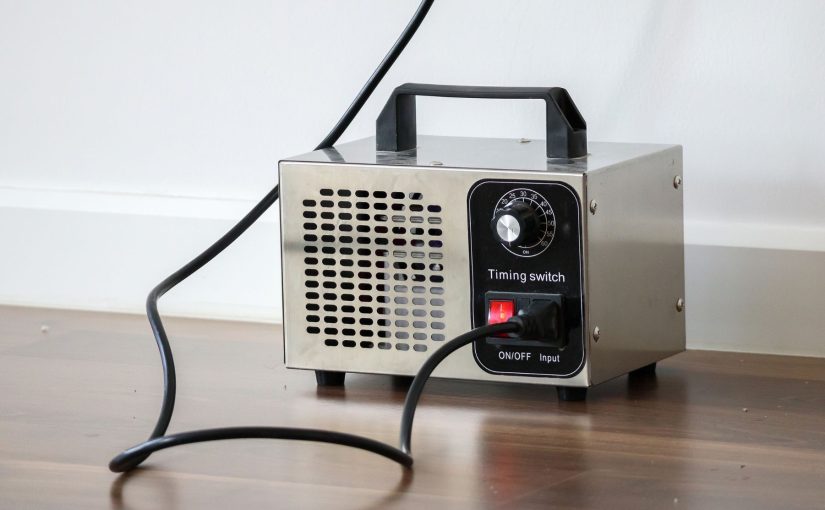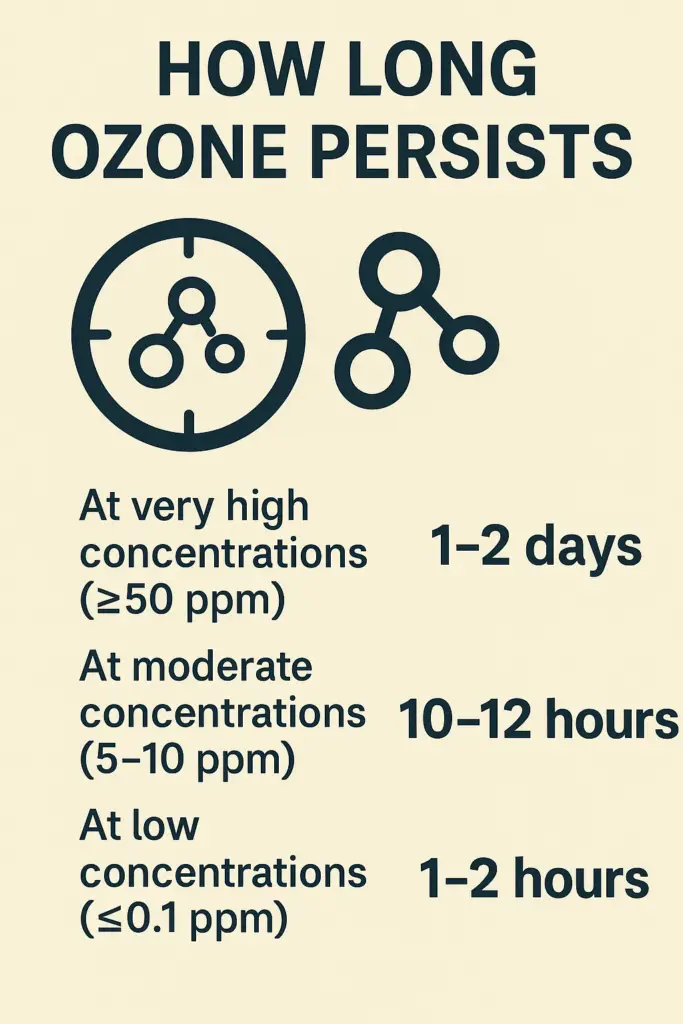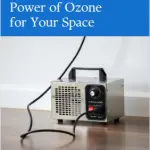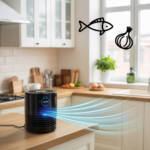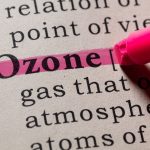Table of Contents
How Long to Wait After Using an Ozone Generator
It’s generally recommended to wait at least 1–2 hours after using an ozone generator before re-entering the treated space. Although ozone breaks down naturally, it’s critical to give it time to dissipate to a safe level before anyone returns. Inhaling ozone can irritate your lungs and airways—similar to the effects of breathing in strong chemical fumes like bleach fumes.
Recommended Waiting Times
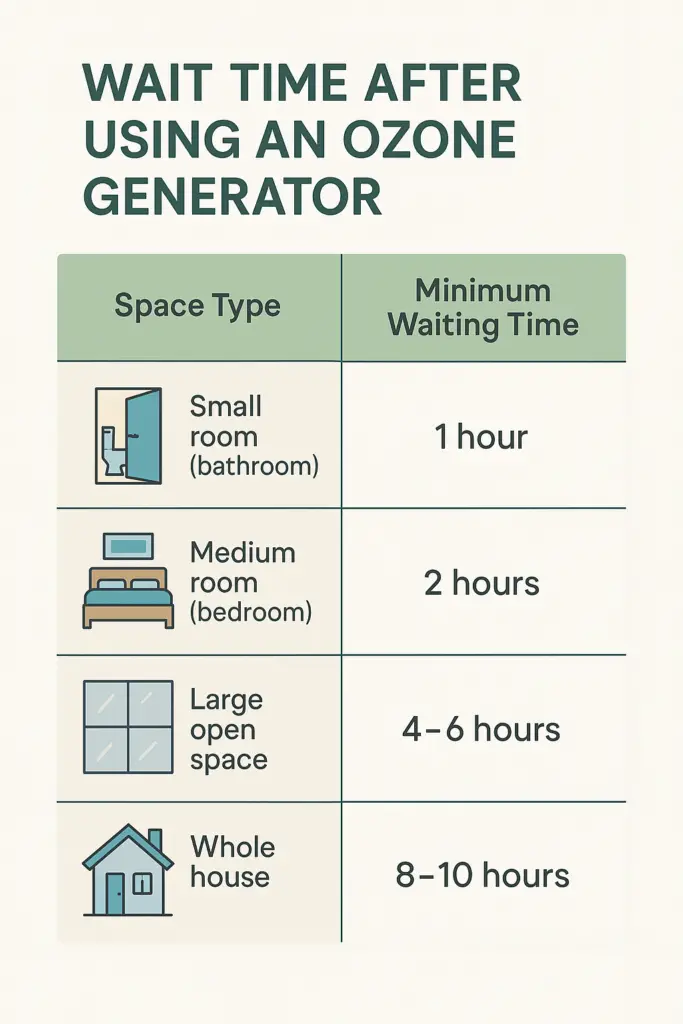
Here are general guidelines for how long to wait after using an ozone generator, based on the size of the space:
| Space Type | Minimum Waiting Time |
|---|---|
| Small room (e.g., bathroom) | 1 hour |
| Medium room (e.g., bedroom) | 2 hours |
| Large open space | 4–6 hours |
| Whole house | 8–10 hours |
Always use an ozone monitor if possible to confirm the space is safe. Health experts recommend re-entering only once ozone levels fall to 0.05 parts per million (ppm) or lower. If levels remain high, extend the wait time or increase ventilation.
How to Tell If It’s Safe to Re-Enter Without a Monitor
While an ozone monitor is the most accurate way to check safety, not everyone has one on hand. If you’re working without a monitor, here are some general tips to help you stay safe:
- Wait longer than recommended times: If the room smells strongly of ozone, add at least 1–2 extra hours before entering.
- Smell test: Ozone has a sharp, chlorine-like smell. If you can still smell it, it’s not safe yet—even if it’s faint.
- Use ventilation cues: If you opened windows or ran HVAC systems, ozone may have dissipated more quickly. Still, err on the side of caution.
- Better safe than sorry: When in doubt, wait longer or return briefly while holding your breath and wearing a mask to test the air, then exit quickly if any irritation occurs.
These tips aren’t a substitute for a real ozone meter, but they help reduce risk when you’re going by feel. For comparison, the effects of breathing ozone are similar to exposure to bleach fumes—and just as dangerous at high levels.
Why You Should Wait
Ozone generators are powerful tools for removing odors, mold, and bacteria. They work by releasing ozone gas (O₃), which oxidizes and breaks down contaminants. But that same power comes with a risk: ozone is a known lung irritant.
Breathing in high concentrations of ozone can lead to:
- Chest pain and tightness
- Throat and eye irritation
- Shortness of breath or coughing
That’s why it’s important to give ozone time to clear out before returning to the treated space. In fact, the health effects of ozone exposure are similar in severity to inhaling bleach fumes or other harsh chemicals.
Key reasons to wait:
- Ozone levels must drop below 0.05 ppm to be considered safe
- Lingering ozone can irritate your lungs, eyes, and sinuses
- Closed spaces allow ozone to build up and persist longer
- Waiting allows time for ozone to react with and neutralize contaminants fully

Ozone persistence depends on concentration—higher levels linger longer. Ventilation helps speed up the breakdown process.
When Not to Use an Ozone Generator
Ozone machines can be effective, but they’re not the right tool for every situation. In fact, using them in the wrong environment can cause more harm than good.
Avoid using an ozone generator if:
- The space is occupied: Never use ozone in rooms where people or pets are present—even briefly.
- You need daily odor control: Ozone is meant for deep treatments, not everyday air freshening. Use a UV air purifier or HEPA-based system for continuous cleaning.
- You’re unsure how long to run it: Guessing runtimes can lead to excess ozone buildup. Always follow your model’s manual or use the shortest recommended setting.
- You’re treating delicate materials: Ozone can degrade rubber, leather, and certain fabrics over time.
If you’re looking for safer, more hands-off solutions, a UV light system installed in your HVAC could be a better fit for routine air purification.
How Long Ozone Persists
Ozone doesn’t last forever—it has a relatively short half-life and naturally breaks down over time. However, how long it lingers depends on both the concentration and whether the space is ventilated.
Here’s how long ozone can stick around:
- High concentrations (50+ ppm): May persist for 24–48 hours
- Moderate concentrations (5–10 ppm): Can last 10–12 hours
- Low concentrations (0.1 ppm): Usually dissipate in 1–2 hours

To speed up ozone removal, ventilate the space by opening windows, turning on fans, or running the HVAC system. Airflow dramatically reduces ozone levels compared to waiting for them to break down naturally.
Ozone vs. Other Air Cleaning Methods
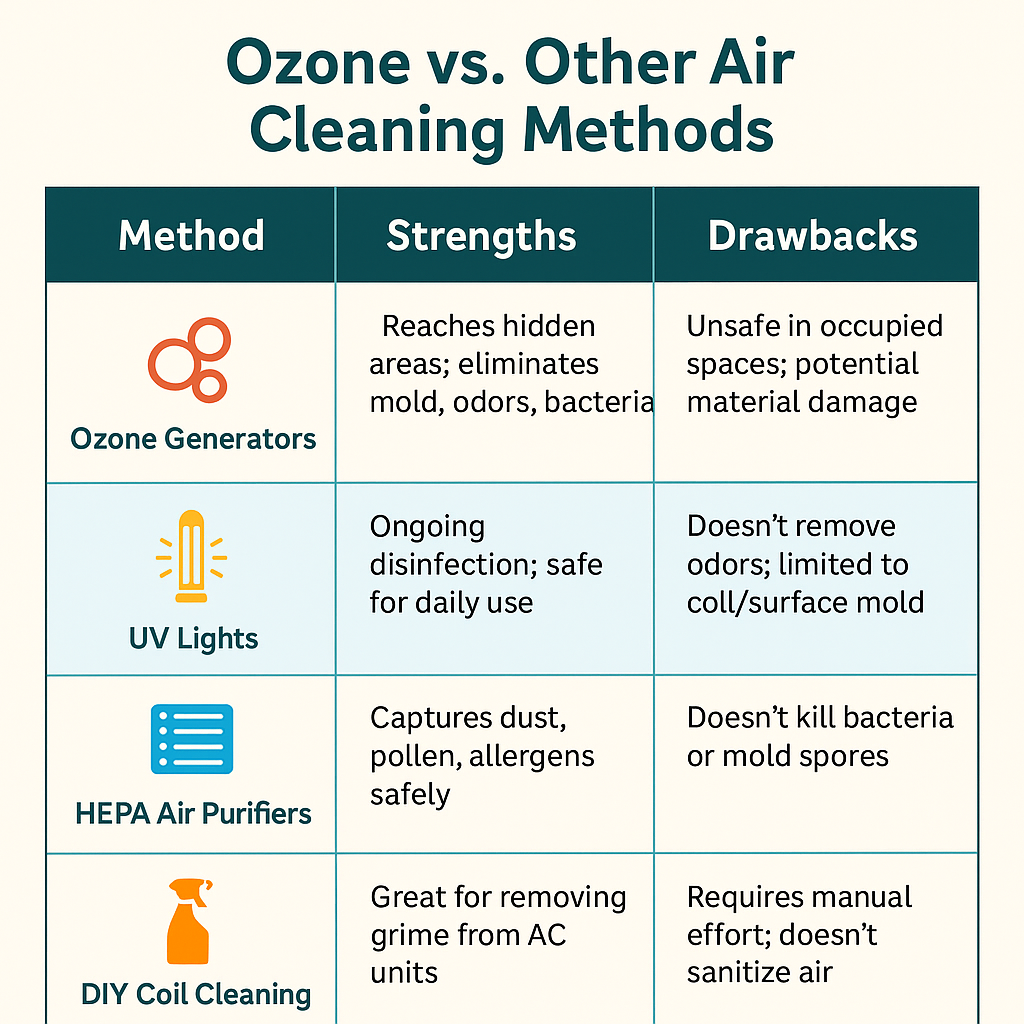
Ozone generators are just one way to clean the air—but they’re not always the most practical or safest. Here’s how they compare to other purification methods:
| Method | Strengths | Drawbacks |
|---|---|---|
| Ozone Generators | Reaches hidden areas; eliminates mold, odors, bacteria | Unsafe in occupied spaces; potential material damage |
| UV Lights in HVAC | Ongoing disinfection; safe for daily use | Doesn’t remove odors; limited to coil/surface mold |
| HEPA Air Purifiers | Captures dust, pollen, allergens safely | Doesn’t kill bacteria or mold spores |
| DIY Coil Cleaning | Great for removing grime from AC units | Requires manual effort; doesn’t sanitize air |
For a complete guide to DIY options, see our AC coil cleaner recipes. If you’re dealing with mold or air quality issues, comparing these methods helps you choose the right approach.
Safety Tips
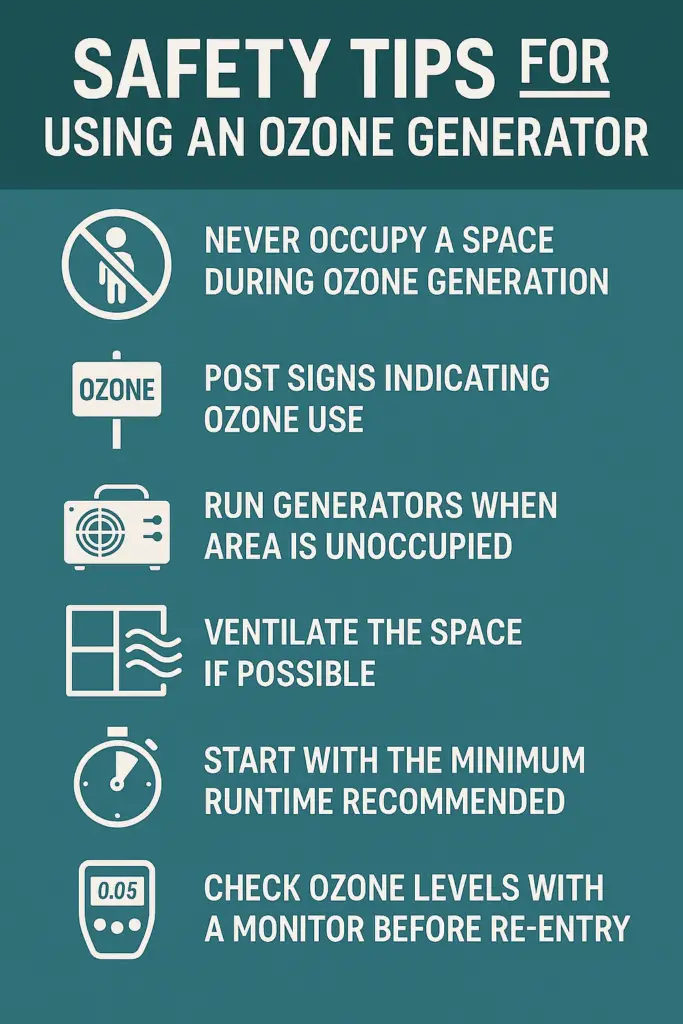
Ozone generators are powerful tools, but using them safely is essential to avoid health risks. Here are some important precautions to follow:
- Only run ozone generators in unoccupied spaces—never stay in the room while it’s operating.
- Post warning signs outside the treated area to prevent accidental entry.
- Use the shortest runtime necessary for the job to reduce excess ozone buildup.
- Ventilate the space after treatment by opening windows or running fans.
- Use an ozone monitor and don’t re-enter until levels fall below 0.05 ppm.
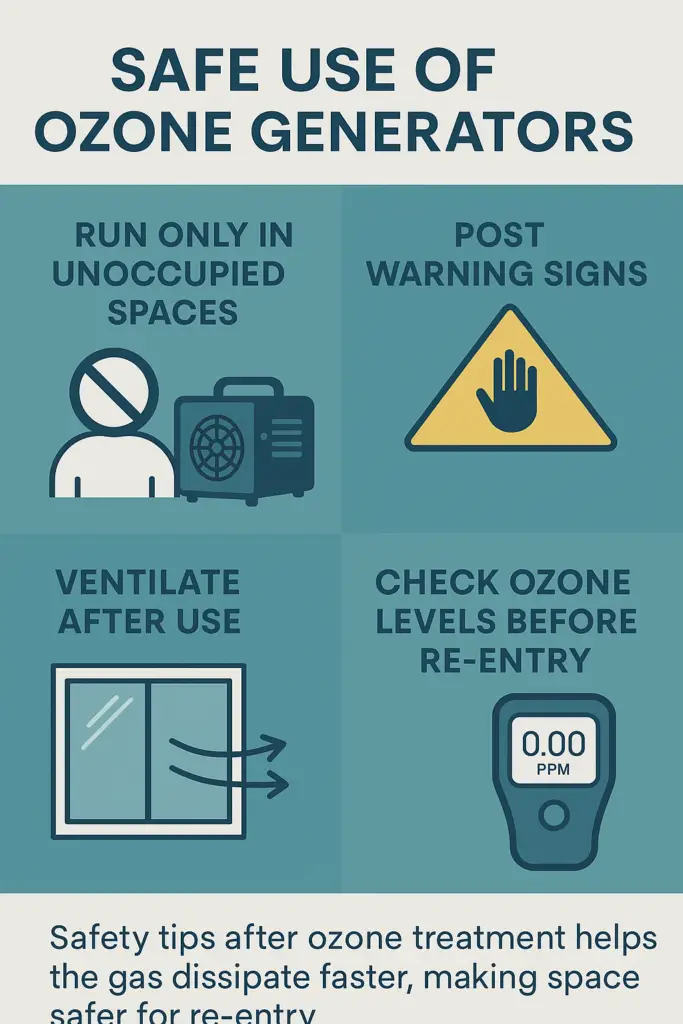
By following these simple safety tips, you can make the most of your ozone generator while protecting yourself, your family, and your pets.
Warning Signs of Ozone Overexposure
Even with proper timing, accidental exposure can happen. If you or someone else enters a space too soon after ozone use, watch for these signs of overexposure:
- Burning sensation in eyes or nose
- Scratchy or dry throat
- Chest tightness or mild shortness of breath
- Dry cough that wasn’t present before
- Headache or lightheadedness
If any of these symptoms appear:
- Leave the area immediately
- Increase ventilation by opening windows or turning on fans
- Drink water to soothe airways
- If symptoms persist, seek medical attention
Keep in mind that ozone is powerful enough to neutralize bacteria—but it can also irritate the lungs like inhaling bleach fumes if used unsafely.
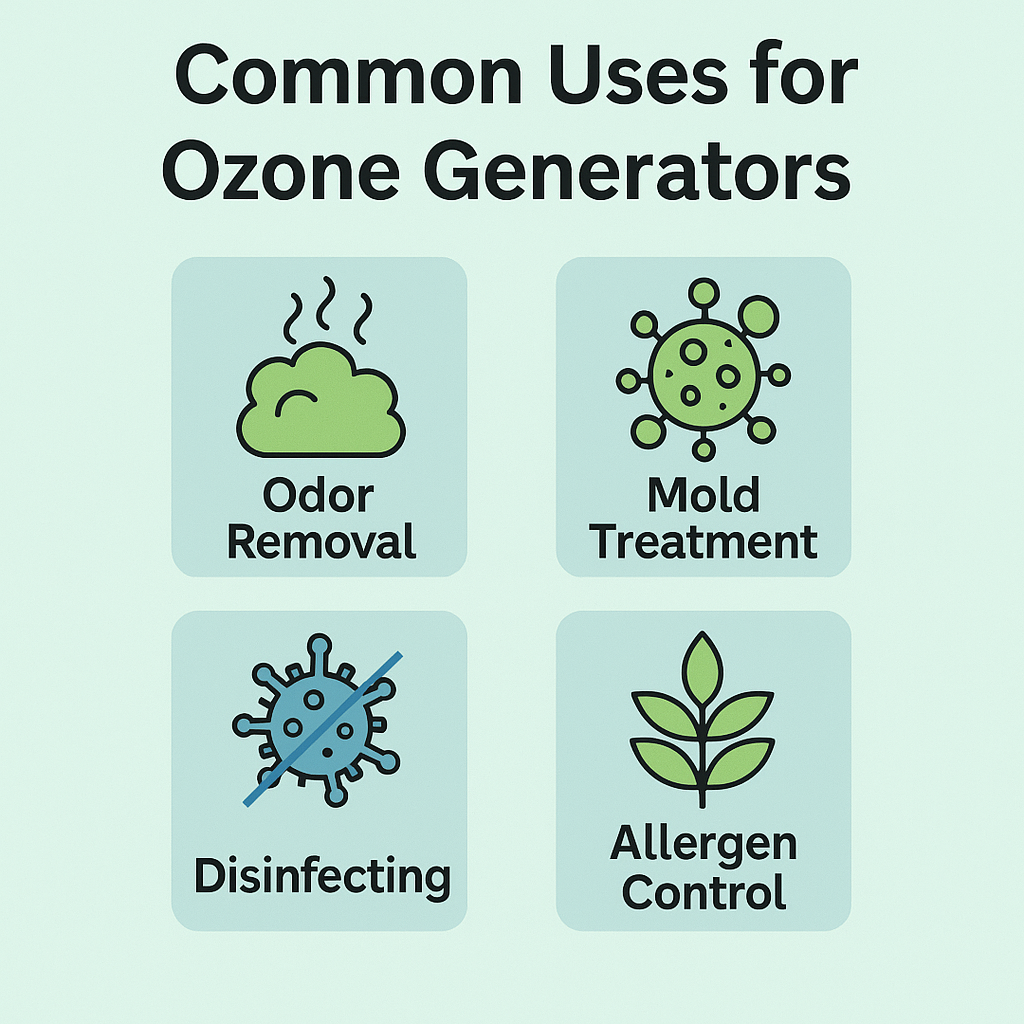
Frequently Asked Questions
Why can ozone be dangerous?
Ozone is a powerful oxidizer that can irritate your lungs, throat, and eyes—especially at high levels. It’s similar to breathing in strong chemical fumes like bleach fumes. Prolonged exposure may cause coughing, chest pain, and shortness of breath.
How long does ozone last in a house?
Depending on the generator size and ozone concentration, it can linger for 8–10 hours or more. Proper ventilation will help clear it faster.
Will ozone damage my possessions?
Yes. High ozone levels can break down rubber, fabrics, leather, and some artwork. Keep valuable or sensitive items out of the room, or limit ozone exposure time.
What is a safe ozone level?
The recommended safe threshold is 0.05 ppm. Anything above this may irritate the respiratory system, especially with long exposure.
Should I ventilate after using ozone?
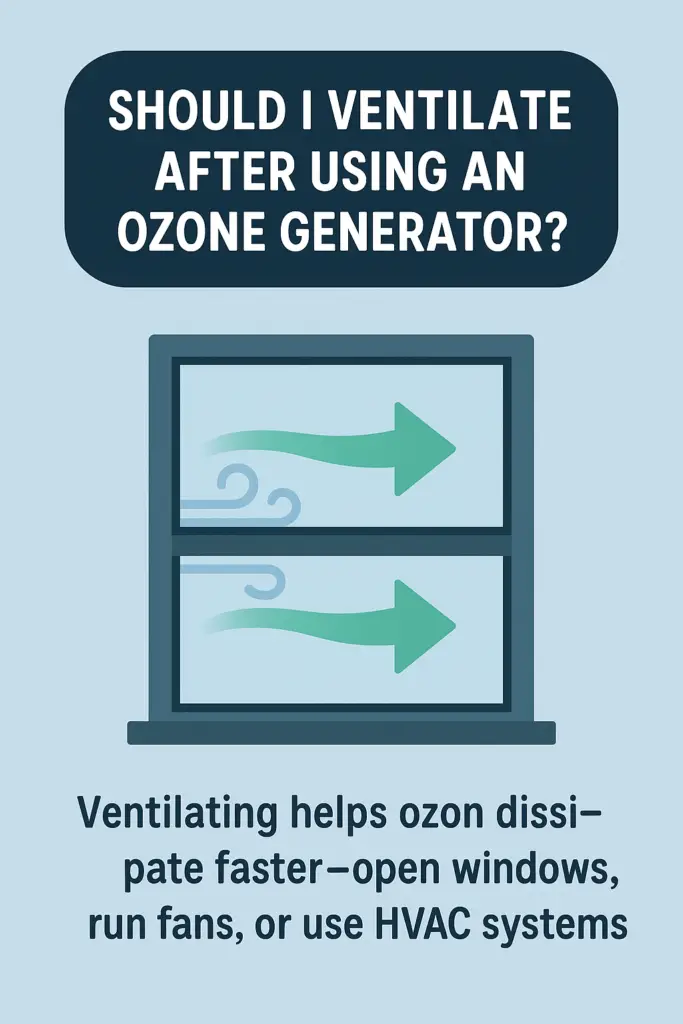
Absolutely. Open windows, run HVAC systems, or use fans to help ozone dissipate faster. This reduces waiting time and ensures safe re-entry.
Can ozone permanently remove odors?
Yes—ozone can permanently eliminate odors caused by smoke, mold, pets, and more. It works by oxidizing odor-causing molecules. For mold issues in particular, see how mold affects window air conditioners.
Is ozone harmful to pets?
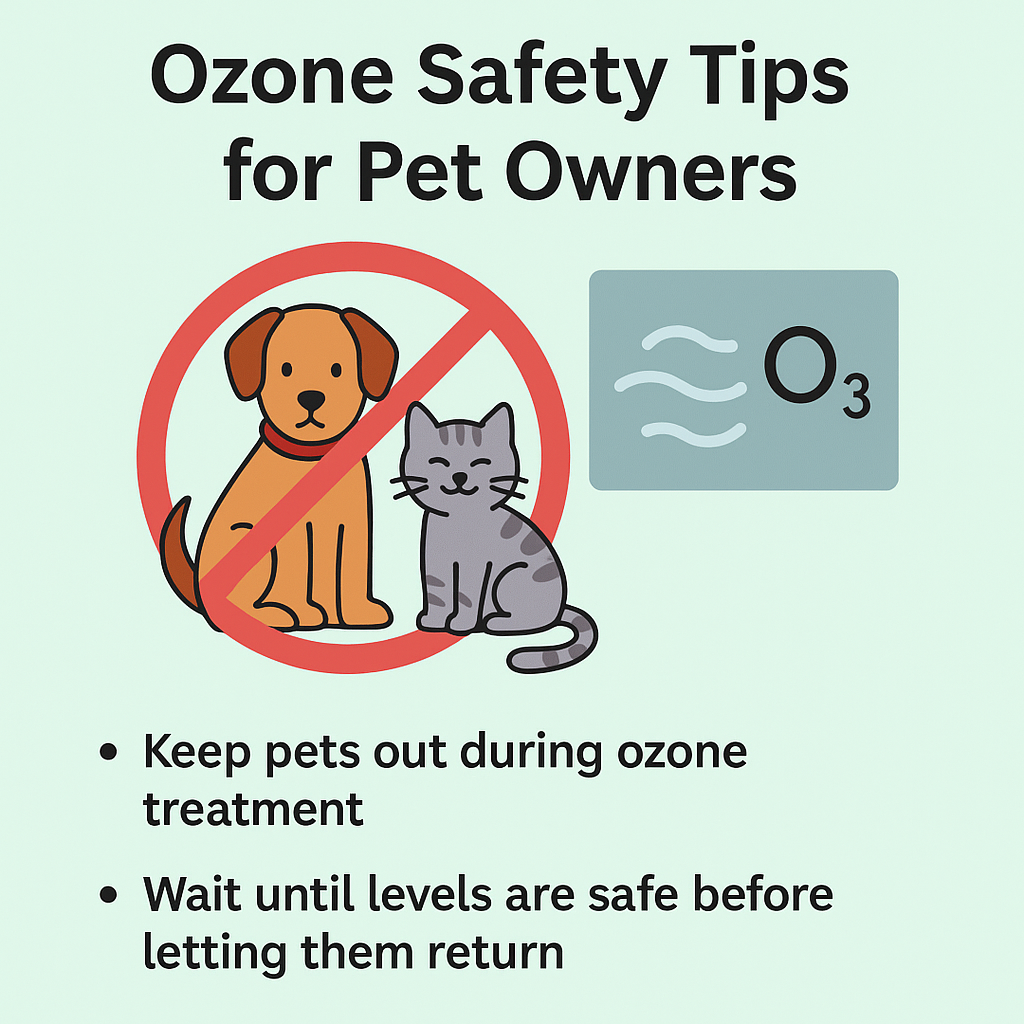
Yes. Pets are often more sensitive than humans to airborne irritants. Remove all animals from the area before and during ozone use—and keep them out until ozone levels are safe.

